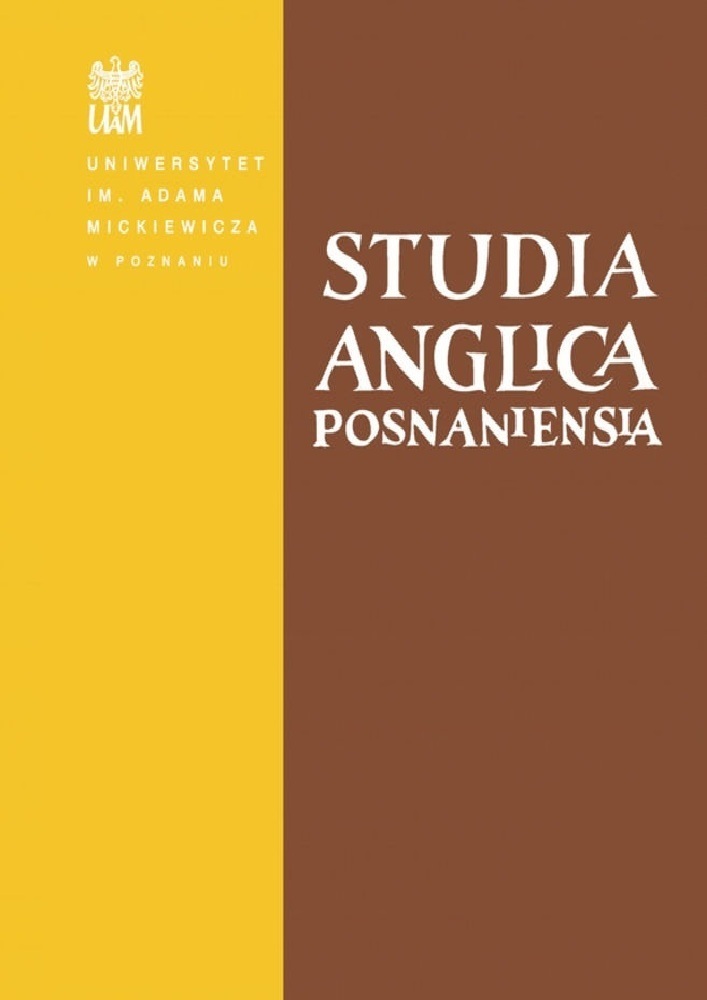Abstract
Joseph Boyden’s Three Day Road (2005) and Gerald Vizenor’s Blue Ravens (2014) offer literary representations of the Great War combined with life narratives focusing on the personal experiences of Indigenous soldiers. The protagonists’ lives on the reservations, which illustrate the experiences of racial discrimination and draw attention to power struggles against the White dominance, provide a representation of and a response to the experiences of Indigenous peoples in North America. The context of World War I and the Aboriginal contributions to American and Canadian wartime responses on European battlefields are used in the novels to take issue with the historically relevant changes. The research focus of this paper is to discuss two strategies of survival presented in Boyden’s and Vizenor’s novels, which enable the protagonists to process, understand, and overcome the trauma of war.
References
Alexander, Jeffrey C. 2004. Toward a theory of cultural trauma. In Jeffrey C. Alexander, Ron Eyerman, Bernhard Giesen, Neil Smelser & Piotr Sztompka (eds.), Cultural trauma and collective identity, 1–30. Berkeley, CA: University of California Press.
Barsh, Russell L. 1991. American Indians in the Great War. Ethnohistory 38(3). 276–303. DOI: 10.2307/482356
Boyden, Joseph. 2005. Three day road. New York, NY: Viking Press.
Britten, Thomas A. 1997. American Indians in World War I: At home and at war. Albuquerque, NM: University of New Mexico Press.
Carlson, David J. 2011. Trickster hermeneutics and the postindian reader: Gerald Vizenor’s constitutional praxis. Studies in American Indian Literatures 23(4). 13–47.
Caruth, Cathy. 1995. Introduction. In Cathy Caruth (ed.), Trauma: Explorations in memory, 151– 157. Baltimore, MD: Johns Hopkins University Press.
Freud, Sigmund. 1950. Project for a scientific psychology. In Standard Edition vol 1. 295–391. London: Hogarth Press.
Hale, Lorraine. 2002. Native American education. A reference handbook. Santa Barbara, CA / Denver, CO/Oxford: ABC-CLIO.
Haseltine, Patricia. 1985. The voices of Gerald Vizenor: Survival through transformation. American Indian Quarterly 9(1). 31–47. DOI: 10.2307/1184651
Jahner, Elaine. 1985. Allies in the word wars: Vizenor’s uses of contemporary critical theory. Studies in American Indian Literatures 9(2). 64–69.
Krouse, Susan Applegate. 2007. North American Indians in the Great War. Lincoln, NE/London: University of Nebraska Press.
Lee, Robert A. 2015a. Flight times in Gerald Vizenor’s Blue Ravens: White Earth mediating history. In Cathy Covell Waegner (ed.), Mediating Indianness, 91–94. East Lansing, MI: Michigan State University Press.
Lee, Robert A. 2015b. Native postmodern? Remediating history in the fiction of Stephen Graham Jones and D. L. Birchfield. In Cathy Covell Waegner (ed.), Mediating Indianness, 73– 89. East Lansing, MI: Michigan State University Press.
Magnusson, Sigurdur Gylfi. 2006. What is microhistory? History News Network. July 5. https://www.historynewsnetwork.org/article/23720 (accessed 3 July 2017)
McCall, Sophie. 2013. Intimate enemies: Weetigo, weesageechak, and the politics of reconciliation in Tomson Highway’s Kiss of the Fur Queen and Joseph Boyden’s Three Day Road. Studies in American Indian Literatures 25(3). 57–85.
McLeod, Neal. 2001. Coming home through stories. In Armand Garnet Ruffo (ed.), (Ad)dressing our words: Aboriginal perspectives on aboriginal literatures, 17–36. Penticton, BC: Theytus Press.
Miles, John D. 2011. The postindian rhetoric of Gerald Vizenor. College Composition and Communication 63(1). 35–53.
Momaday, N. Scott. 1968. House made of dawn. New York, NY: Harper & Row.
Silko, Leslie Marmon. 1977. Ceremony. New York, NY: Penguin Books.
Sokolowski, Jeanne. 2010. Between dangerous extremes: Victimization, ultranationalism, and identity performance in Gerald Vizenor’s Hiroshima Bugi: Atomu 57. American Quarterly 62(3). 717–738. DOI: 10.1353/aq.2010.0006
Steiner George. 1986. Real presences. Chicago, IL: The University of Chicago Press.
Talbot, Robert J. 2011. “It would be best to leave us alone”: First Nations responses to the Canadian war effort, 1914–1918. Journal of Canadian Studies 45(1). 90–120.
Teichler, Hanna. 2014. Joseph Boyden’s Three day road: Transcultural (post-)memory and identity in Canadian World War I fiction. In Martin Löschnigg & Marzena Sokołowska-Paryż (eds.), The Great War in post-memory literature and film, 239–254. Berlin: Walter de Gruyter. DOI: 10.1515/9783110363029.239
Vance, Jonathan. 1997. Death so noble: Memory, meaning and the First World War. Vancouver: University of British Columbia Press.
Visvis, Vikki. 2010. Culturally conceptualizing trauma: The Windigo in Joseph Boyden’s Three Day Road. Studies in Canadian Literature 35(1). 224–243.
Vizenor, Gerald. 1978. Wordarrows: Indians and whites in the new fur trade. Minneapolis, MN: University of Minnesota Press.
Vizenor, Gerald. 1994. Manifest manners: Postindian warriors of survivance. Lincoln, NE: University of Nebraska Press.
Vizenor, Gerald. 2006. George Morrison: Anishinaabe expressionist artist. The American Indian Quarterly 30(3–4). 646–660. DOI: 10.1353/aiq.2006.0034
Vizenor, Gerald. 2009. Native liberty. Natural reason and cultural survivance. Lincoln, NE / London: University of Nebraska Press.
Vizenor, Gerald. 2010. American Indian art and literature today: Survivance and tragic wisdom. Museum International 62(3). 41–51. DOI: 10.1111/j.1468-0033.2010.01732.x
Vizenor, Gerald. 2014. Blue ravens: Historical novel. Middletown, CT: Wesleyan UP.
Wilson, Ross J. 2014. It still goes on: Trauma and the memory of the First World War. In Martin Löschnigg & Marzena Sokołowska-Paryż (eds.), The Great War in post-memory literature and film, 43–58. Berlin: Walter de Gruyter. DOI: 10.1515/9783110363029.43
